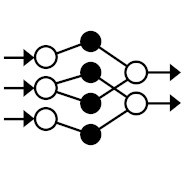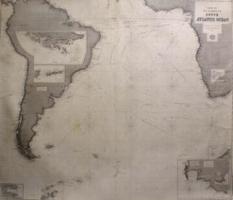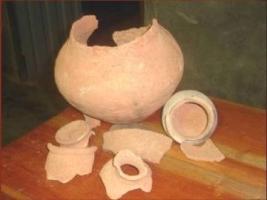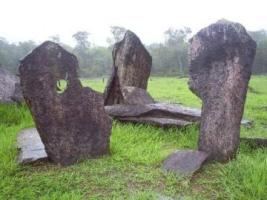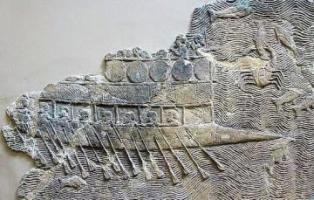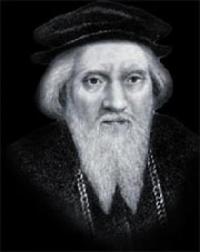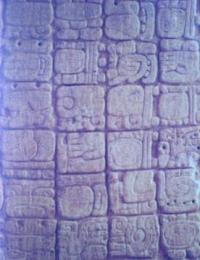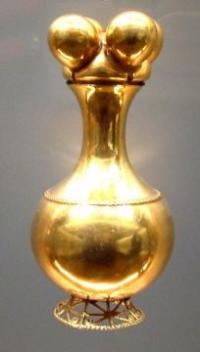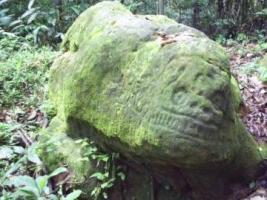Copy Link
Add to Bookmark
Report
Neuron Digest Volume 09 Number 11

Neuron Digest Wednesday, 18 Mar 1992 Volume 9 : Issue 11
Today's Topics:
CNS BBS Number Change, Simulations Available
Update to Aspirin 5.0 (1 bug fix, new manual.ps)
Send submissions, questions, address maintenance, and requests for old
issues to "neuron-request@cattell.psych.upenn.edu". The ftp archives are
available from cattell.psych.upenn.edu (128.91.2.173). Back issues
requested by mail will eventually be sent, but may take a while.
----------------------------------------------------------------------
Subject: CNS BBS Number Change, Simulations Available
From: Wesley R. Elsberry <welsberr@sandbox.kenn.wa.us>
Date: Tue, 04 Feb 92 22:48:00 -0800
Central Neural System Electronic Bulletin Board
Modem: 509-627-6CNS
Sysop: Wesley R. Elsberry
P.O. Box 1187, Richland, WA 99352
welsberr@sandbox.kenn.wa.us
Central Neural System BBS is an electronic online information service
which is dedicated to promoting communication of concepts and code
between Artificial Neural Network researchers and enthusiasts. CNS has
been online since January, 1989, and has never charged users for access.
There are many files related to ANNs that are available for download.
These include simulation packages (e.g., Greg Tarr's Neural Graphics
simulation and the Back Propagation Simulator from George Mason
University), demos (e.g., Togai Infralogic's Fuzzy and Neural Technology
demo), source code (e.g., Scott Fahlman's Cascade Correlation routines in
C and LISP), tutorials (e.g., my own ADALINE tutorial, with text,
simulation package, and source code), and other text (e.g., Neuron
Digest) and announcements gleaned from comp.ai.neural-nets, Neuron
Digest, and the NEURAL_NET Echo. Most of the simulations are for IBM PC
compatible machines, but there are simulations for the Macintosh and Unix
boxes as well.
CNS is the home of the NEURAL_NET Echo, a FidoNet backbone echo
(distributed special interest discussion area) available upon request at
any of nearly 7,000 FidoNet and RBBS-Net BBSs across the country and
around the world.
I have made available a mail service for file transfer: if you mail an
appropriate number of MS-DOS formatted disks, a list of files wanted, and
a self-addressed stamped envelope, I will load up the disks and send them
back to you. This will save on possible long-distance charges. To get a
list of files, login to CNS, go to the LOGIN file area, and download the
file F347_303.ARJ or SYSTEM.DIR. These files contain a complete list of
files available from CNS BBS.
There is an ftp mirror site for the CNS ANNSIM file set. The mirror site
is at me.uta.edu (129.107.2.20) in the /pub/neural directory. Most ANN
offerings are in /pub/neural/annsim. The mirror site is run by Dr.
Seiichi Nomura of the University of Texas at Arlington Mechanical
Engineering department.
The Sysop of CNS is willing to accept sponsorship from persons or
institutions willing to provide operating expenses for the dedicated
phone line, or to provide equipment allowing expansion of operation. A
recent move has greatly reduced the available hard disk space at CNS, so
a dedicated machine with a largish hard disk would be much appreciated
here. Older technology, like 80286 PC ATs, which you or your company
might be surplusing would be most welcome for expansion of CNS. Please
contact Wesley Elsberry at the address above if you are interested in
becoming a sponsor.
Use the following communication parameters for connecting to CNS BBS:
eight data bits, one stop bit, no parity; bps rate as 9600 (Courier HST
protocol), 2400, 1200, or 300 bps.
Submission of ANN source code, tutorials, and other informative text is
always appreciated. The Sysop encourages students, researchers, and
others interested in ANN technology to make their own work available for
the enlightenment of others.
Complete ANNSIM Section Directory Listing
as of
04:47 Tuesday 4-Feb-92
ADALINE.LZH 49k
(DOS) ADALINE ANN model tutorial, demo simulation
AIEXP_NN.ARJ 108k
(DOS) AI Expert's ANN Demo Disk
AIX_NNPP.ZIP 61k
(DOS) Larry O'Brien's BP with C++ source
ALN.FTP 5k
(TEXT) How to get ALN via FTP
ANN4TH.LZH 32k
(DOS) ANN in Forth with Borland C++ source
ANNCAM.ARJ 4k
(DOS) Content Addressable Memory
APPRENT.REV 3k
(TEXT) Book blurb for "Apprentices Of Wonder"
APP_DB10.TXT 13k
(TEXT) ANN, GA Applications Database (open for your input, too)
ARTICLE2.TXT 21k
(TEXT) An unorganized NN related bibliography
ART_CODE.ANN 23k
(TEXT) ART 1 & 2 in C source code
ATARI_BP.FTP 1k
(TEXT) Atari ST BP simulation available by FTP
ATREE2.LZH 328k
(WIN 3) Adaptive Logic Networks version 2
AUTONET.ARJ 69k
(DEMO: DOS) EGA/VGA ANN builder w/ examples
BAM.LZH 31k
(DOS) Bidirectional Associative Memory Simulation
BATCHNET.ARJ 43k
(DOS) Three-layer back-prop ANN
BAYES.ARJ 4k
(DOS) Tree-structured Bayesian belief network
BEIJING.ANC 3k
(TEXT) 1992 IJCNN in Beijing Announcement
BENCH.ARJ 294k
(TEXT) CMU Neural Network benchmarks
BPS211.LZH 389k
(DOS,MAC,UNIX) G. Mason U. BP & Boltzmann simulator 2.11
BPSIM2.ARJ 42k
(DOS, Amiga, Sun) Back-propagation package
BPS_100.ARJ 190k
(DOS,UNIX,MAC) Back-Propagation Simulation package
BPS_210.LZH 46k
(DOS) Update for DOS of BPS_100, adds simulated annealing
BRAINOCR.ARJ 3k
(Brainmaker) PCX reader
BU_CNS.ANC 6k
(TEXT) Boston U.'s Cognitive and Neural Systems grad program
BVE.ARJ 40k
(Brainmaker) Variable Evaluator Utility
CASCOR.ARJ 102k
(TEXT) Cascade Correlation NNs in LISP and C
CNNOE91.WS 19k
WordStar 5.5 document of Ocean Engineering NN conference
CNS.FTP 11k
(TEXT) CNS ftp Mirror Site Announcement
CNSANNC.TXT 3k
(TEXT) CNS BBS description
CNSANNC.WP 5k
(TEXT) CNS BBS description in WP 5.1
CNSSPON1.TXT 3k
(TEXT) CNS BBS Sponsorship info
CNSSPON1.WP 5k
(TEXT) CNS BBS sponsorship info in WP 5.1
CORLITHM.ARJ 10k
(TEXT) Correlithm theory overview and software modules, some refs
DDJ-AI.ARJ 184k
Dr. Dobb's AI programs, including SILOAM -- a perceptron ANN
DDJ-APR.ARJ 27k
Dr. Dobb's programs, including some ANN simulations
DDONG.ABS 5k
(TEXT) Abstract from Dawei Dong's thesis
DESIRE.ARJ 150k
(DEMO: DOS) Korn's DESIRE modelling package demo
DOS_ANN.BBS 12k
(TEXT) Mott Given's list of ANN simulations from BBS's
ET.ARJ 52k
(DOS) Perceptron simulator
FACESIM.ARJ 8k
(TEXT) Alice O'Toole's face recognition ANN source code, C & FORTRAN
GDELTA.PAS 14k
(TEXT) Pascal source for BP
GENALG.LZH 33k
(DOS) A simple genetic algorithm demo program
GENESIS.ARJ 55k
(UNIX) Genesis Genetic Algorithm package
GENESIS.FTP 3k
(TEXT) How to ftp latest GENESIS version
GRADSIM2.Z 297k
(UNIX) Package for time-delay ANNs [compress and tar]
GRADSIMF.Z 47k
(UNIX) Package for time-delay ANNs, minimal version [compress & tar]
GRECC.JOB 4k
(TEXT) ANN job description
HOPFIELD.ARJ 28k
Hopfield neural net - need UNIX tar command to uncompress it
ICANN92.CFP 6k
(TEXT) ICANN*92 Call For Papers
ISSNNETS.001 38k
(TEXT) ISSNNets Newsletter #1
ISSNNETS.002 56k
(TEXT) ISSNNets Newsletter #2
JEDI.ZOO 70k
(DOS) Jet engine simulation system using ANNs
KNOWREP.ARJ 14k
(TEXT) MIND Workshop on NNs for Knowledge Representation abstracts, etc
KOHSIM24.LZH 21k
(Unix) Read-Only X11 ANN (Kohonen network)
LVQ_DOCS.LZH 72k
(UNIX) Learning Vector Quant. sim, 1.00
LVQ_SRC.LZH 281k
(UNIX) Learning Vector Quant. sim, 1.00
LVQ_UNIX.LZH 269k
(UNIX) Learning Vector Quant. sim, 1.00
MAC33.HQX 141k
(MAC) Mactivation 3.3 in Stuffit format
MD2.ARJ 2k
(DOS) Simple medical diagnosis ANN in BASIC
MEAP.FTP 2k
(TEXT) How to use the CNS ftp mirror at me.uta.edu
MECH_ENG.LZH 83k
(PostScript) Stevenson's ANN Mechanical Engineering Applications
MINDNOTE.ARJ 45k
(TEXT) MIND Meeting Notes
MIND_TXT.ARJ 43k
(TEXT) MIND Newsletter announcements
MUSIC.ANC 8k
(TEXT) Music & Connectionism book announcement
NASANETS.ARJ 154k
(TEXT) NETS Version 2.0 by Paul Baffes of NASA in C source
NDV6_0.ARJ 104k
(TEXT) Neuron Digest V6 I:0-9
NERVOUS.ARJ 258k
(DOS) Nervous System Construction Kit v2 (artificial cockroach)
NETLAB01.ARJ 132k
(DOS) Netlab v0.1 ANN hardware simulator
NETSTUFF.ARJ 97k
(DOS) Code to go with the book by Nelson & Illingworth
NEURAL.ARJ 136k
(DOS) Several simulations: BP, Kohonen, BAM, etc.
NEURAL1.LZH 336k
(TEXT) Articles on ANN products, tutorials
NEURAL2.LZH 303k
(TEXT) More ANN articles
NEURALX.LZH 63k
(DOS) Backprop simulator
NEURON.LZH 115k
NEURONET.LZH 61k
(DOS) ANN tutorial program for EGA & VGA
NEUROSIM.ARJ 109k
(DOS) Shareware BP & Kohonen simulator by author of ET
NEURTTT.ARJ 60k
(DOS) Neural Network Tic-Tac-Toe demonstration
NEWRULE.BAS 8k
(TEXT) Gary Coulter's NEWRULE source code, GWBASIC ASCII text
NEWRULE.LZH 32k
(TEXT) Gary Coulter's NEWRULE BP ANN simulation with GWBASIC source
NEWRULEC.LZH 26k
(TEXT) Edward Nicol's port to C of Coulter's NEWRULE BP ANN sim.
NEWSTUFF.CNS 4k
(TEXT) List of newest files on CNS
NG.EXE 136k
(DOS) Greg Tarr's excellent Neuron Graphics package (>= EGA)
NN2.ARJ 28k
(DOS) ANN simulator with 256 neurons
NN9109.ARJ 26k
(TEXT) comp.ai.neural-networks for 91/09
NN9110.ARJ 71k
(TEXT) comp.ai.neural-networks for 91/10
NN9111.ARJ 103k
(TEXT) comp.ai.neural-networks for 91/11
NNET.ARJ 4k
(DOS) NASA Tech Briefs concerning ANN
NNETDRAW.ARJ 48k
(DOS) ANN BP tutorial with Prolog source
NNETFAQS.LZH 15k
Frequently Asked Questions on Neural Nets, from USENET comp.ai.neural-nets
NNPARCMP.ANC 6k
(TEXT) Book announcement, "NN for Parallel Computation"
NNPCTOOL.ARJ 331k
(DOS) Neural Network PC Tools support software
NN_FTP.LZH 12k
(TEXT) ANN simulations available via FTP
NN_VLSI.CFP 2k
(TEXT) Call For Papers: ANN's in VLSI
OID.LZH 62k
(DOS) ANN object recognition program
OPTI2.ANC 7k
(TEXT) MIND Workshop: Optimality in bio. & artificial NNs, Feb. 6-8
OZ_WKSHP.ANC 5k
(TEXT) Australian Workshop announcement
PACBRAIN.ANC 5k
(TEXT) Pan Pacific Brain Science conference announcement
PDNNET.ARJ 59k
(DOS) PD BP ANN with Turbo C source
PERCEPT.ARJ 4k
(DOS) Perceptron ANN
PRICAI92.ANC 6k
(TEXT) Pacific Rim Intl. Conf. on AI
PROF@BU.TXT 2k
(TEXT) Job search for prof at BU's CNS program
R&MBPANN.ARJ 5k
(DOS) Back-prop in C from Rumelhart & McClelland
RESRC105.TXT 25k
(TEXT) Resources for ANN Research, Study, & Play
SANTAFE.LZH 10k
(TEXT) Santa Fe Time Series Competition Announcement
SHADETRE.TXT 7k
(TEXT) ShadeTree BBS info
SPEECH.JOB 2k
(TEXT) ANN job announcement
SRC_CODE.LST 1k
(TEXT) Tells which files on CNS contain source code
S_GROSSB.ARJ 2k
(TEXT) A Grossberg bibliography
TANN.ARJ 128k
(DOS) Neural networking kit with examples
TDNN_FOR.FTP 2k
(TEXT) Where to FTP Time-Delay NN FORTRAN source code
TIERRA.ANC 15k
(TEXT) Tom Ray's Tierra GA simulation ftp announcement
TOPMAP.ARJ 4k
(DOS) Kohonen topology preserving maps in Pascal
TTT_ANN.ARJ 6k
(TEXT) C code for Tic-Tac-Toe neural network
V8I01.ND 24k
(TEXT) Neuron Digest Vol. 8 Issue 01
V8I02.ND 21k
(TEXT) Neuron Digest Vol. 8 Issue 02
V8I03.ND 21k
(TEXT) Neuron Digest Vol. 8 Issue 03
V8I04.ND 27k
(TEXT) Neuron Digest Vol. 8 Issue 04
V8I05.ND 20k
(TEXT) Neuron Digest V8 I05
V8I06.ND 19k
(TEXT) Neuron Digest Vol. 8 Issue 06
V8I07.ND 31k
(TEXT) Neuron Digest V8 I7
V8I08.ND 30k
(TEXT) Neuron Digest V8 I8
V8I09.ND 27k
(TEXT) Neuron Digest V8 I9
V8I10.ND 31k
(TEXT) Neuron Digest V8 I10
V8I11.ND 21k
(TEXT) Neuron Digest V8 I11
V8I14.ND 28k
Description not available
V8I15.ND 19k
Description not available
V8I16.ND 24k
Description not available
V9I01.ND 20k
Description not available
WORKABST.MND 23k
(TEXT) Abstracts from MIND's 4th Annual Workshop
WRE_THES.LZH 254k
(DOS) Master's thesis, with ANN source, exec, and text. WR Elsberry
Obtaining Files From
Central Neural System
Electronic Bulletin Board
04 February 1992
by Wesley R. Elsberry, System Operator
P.O. Box 1187
Richland, WA 99352
Currently, there are three mechanisms available for acquiring CNS files:
direct dial-up, floppy disk transfer, and anonymous FTP. The list of
files is available as SYSTEM.DIR in the LOGIN section of the FILE area.
Direct dial-up is accomplished by setting your modem's communication
parameters to eight data bits; one stop bit; no parity; and 300, 1200,
2400, or 9600 (Courier HST) bits per second transfer rate. Then dial
817-627-6CNS.
Anonymous FTP access is accomplished by following the instructions in the
CNS.FTP file in the ANNSIM section.
File transfer by mailed floppy disk works as follows. There are three
procedures, please choose one of these (listed here in my order of
preference):
1. Mail enough MS-DOS floppies to hold the files you want, the list of
files you want, a self-addressed envelope, and at least one
Artificial Neural Network tutorial, demonstration program, simulation,
source listing, or other significant work THAT CNS DOES NOT ALREADY
HAVE AVAILABLE on floppy. I'll copy off the file(s) you send to add to
the CNS holdings, copy over the files you want, and send the disk(s)
back to you (I'll provide the shipping charges back if you don't).
Please do not send commercial works that you are not the
author of, or files for which restrictions on distribution prohibit
CNS from redistributing the files.
2. Mail enough MS-DOS floppies to hold the files you want, the list of
files you want, and a self-addressed and stamped envelope. I'll copy
over the files you want, and send the disk(s) back to you.
3. Send $5.00 US PER MS-DOS floppy disk needed to hold the files you
request, the list of files you want, and your return address. I'll
provide the floppies and shipping.
Please note that I will abide by whatever distribution restrictions are
given in the documentation of each package. For example, none of the
software distributed by COSMIC can be redistributed outside the USA
(e.g., NASANETS.ARJ).
Requests for floppy disk processing will also be prioritized according to
the procedures given above, with highest priority going to procedure #1,
and lowest to procedure #3.
------------------------------
Subject: Update to Aspirin 5.0 (1 bug fix, new manual.ps)
From: Russell Leighton <russ@oceanus.mitre.org>
Date: Thu, 13 Feb 92 09:25:21 -0500
An updated version of the Aspirin/MIGRAINES software replaces the tar
files at the ftp sites (see announcement below).
The following things are different:
-----> 1. A *MAJOR* (but stupid) bug has been fixed
in the am2gnuplot, am2math, am2matlab filters.
******* This was only manifest on Dec systems *******
******** All Aspirin user's should either get *******
******** the new distribution or fix it. *******
To fix:
$NNTOOLS/src/tools/bp_tools/ui/am2gnuplot.c
$NNTOOLS/src/tools/bp_tools/ui/am2math.c
$NNTOOLS/src/tools/bp_tools/ui/am2matlab.c
The fix:
Add "return(1);" to the last line
in the function: read_am_stream().
Then type: make -f $MACHTYPE.mk install
or re-run the installation script (if you
have already registered by email, please
don't do it again).
2. I reTeXed the manual on a NexT. Some people could not
preview or print the manual.ps file. Now the postscript
is more portable. The manual.ps file can be previewed
under ghostscript, but not under pageview (Sun, get your
act together and fix this piece of @#$%). It should
print on most postscript printers.
If you are RE-installing Aspirin/MIGRAINES and have already registered by
email, please don't do it again.
Russ
------------------- Old Announcement Follows ----------------------
------- OFFICIAL RELEASE! All pre-release 5.0 versions should be deleted --
The following describes a neural network simulation environment made
available free from the MITRE Corporation. The software contains a neural
network simulation code generator which generates high performance C code
implementations for backpropagation networks. Also included is an
interface to visualization tools.
FREE NEURAL NETWORK SIMULATOR
AVAILABLE
Aspirin/MIGRAINES
Version 5.0
The Mitre Corporation is making available free to the public a neural
network simulation environment called Aspirin/MIGRAINES. The software
consists of a code generator that builds neural network simulations by
reading a network description (written in a language called "Aspirin")
and generates a C simulation. An interface (called "MIGRAINES") is
provided to export data from the neural network to visualization tools.
The system has been ported to a number of platforms:
Apollo
Convex
Cray
DecStation
HP
IBM RS/6000
Intel 486/386 (Unix System V)
NeXT
News
Silicon Graphics Iris
Sun4, Sun3
Coprocessors:
Mercury i860 (40MHz) Coprocessors
Meiko Computing Surface w/i860 (40MHz) Nodes
Skystation i860 (40MHz) Coprocessors
iWarp Cells
Included with the software are "config" files for these platforms.
Porting to other platforms may be done by choosing the "closest" platform
currently supported and adapting the config files.
Aspirin 5.0
===========
The software that we are releasing now is for creating, and evaluating,
feed-forward networks such as those used with the backpropagation
learning algorithm. The software is aimed both at the expert
programmer/neural network researcher who may wish to tailor significant
portions of the system to his/her precise needs, as well as at casual
users who will wish to use the system with an absolute minimum of effort.
Aspirin was originally conceived as ``a way of dealing with MIGRAINES.''
Our goal was to create an underlying system that would exist behind the
graphics and provide the network modeling facilities. The system had to
be flexible enough to allow research, that is, make it easy for a user to
make frequent, possibly substantial, changes to network designs and
learning algorithms. At the same time it had to be efficient enough to
allow large ``real-world'' neural network systems to be developed.
Aspirin uses a front-end parser and code generators to realize this goal.
A high level declarative language has been developed to describe a
network. This language was designed to make commonly used network
constructs simple to describe, but to allow any network to be described.
The Aspirin file defines the type of network, the size and topology of
the network, and descriptions of the network's input and output. This
file may also include information such as initial values of weights,
names of user defined functions.
The Aspirin language is based around the concept of a "black box". A
black box is a module that (optionally) receives input and (necessarily)
produces output. Black boxes are autonomous units that are used to
construct neural network systems. Black boxes may be connected
arbitrarily to create large possibly heterogeneous network systems. As a
simple example, pre or post-processing stages of a neural network can be
considered black boxes that do not learn.
The output of the Aspirin parser is sent to the appropriate code
generator that implements the desired neural network paradigm. The goal
of Aspirin is to provide a common extendible front-end language and
parser for different network paradigms. The publicly available software
will include a backpropagation code generator that supports several
variations of the backpropagation learning algorithm. For
backpropagation networks and their variations, Aspirin supports a wide
variety of capabilities:
1. feed-forward layered networks with arbitrary connections
2. ``skip level'' connections
3. one and two-dimensional weight tessellations
4. a few node transfer functions (as well as user defined)
5. connections to layers/inputs at arbitrary delays,
also "Waibel style" time-delay neural networks
6. autoregressive nodes.
7. line search and conjugate gradient optimization
The file describing a network is processed by the Aspirin parser and
files containing C functions to implement that network are generated.
This code can then be linked with an application which uses these
routines to control the network. Optionally, a complete simulation may be
automatically generated which is integrated with the MIGRAINES interface
and can read data in a variety of file formats. Currently supported file
formats are:
Ascii
Type1, Type2, Type3 Type4 Type5 (simple floating point file formats)
ProMatlab
Examples
========
A set of examples comes with the distribution:
xor: from RumelHart and McClelland, et al, "Parallel Distributed
Processing, Vol 1: Foundations", MIT Press, 1986, pp. 330-334.
encode: from RumelHart and McClelland, et al, "Parallel Distributed
Processing, Vol 1: Foundations", MIT Press, 1986, pp. 335-339.
detect: Detecting a sine wave in noise.
iris: The classic iris database.
characters: Learing to recognize 4 characters independent of rotation.
ring: Autoregressive network learns a decaying sinusoid impulse response.
sequence: Autoregressive network learns to recognize a short sequence of
orthonormal vectors.
sonar: from Gorman, R. P., and Sejnowski, T. J. (1988). "Analysis of
Hidden Units in a Layered Network Trained to Classify Sonar Targets" in
Neural Networks, Vol. 1, pp. 75-89.
spiral: from Kevin J. Lang and Michael J, Witbrock, "Learning to Tell Two
Spirals Apart", in Proceedings of the 1988 Connectionist Models Summer
School, Morgan Kaufmann, 1988.
ntalk: from Sejnowski, T.J., and Rosenberg, C.R. (1987). "Parallel
networks that learn to pronounce English text" in Complex Systems, 1,
145-168.
perf: a large network used only for performance testing.
monk: The backprop part of the monk paper. The MONK's problem were the
basis of a first international comparison of learning algorithms. The
result of this comparison is summarized in "The MONK's Problems - A
Performance Comparison of Different Learning algorithms" by S.B. Thrun,
J. Bala, E. Bloedorn, I. Bratko, B. Cestnik, J. Cheng, K. De Jong, S.
Dzeroski, S.E. Fahlman, D. Fisher, R. Hamann, K. Kaufman, S. Keller, I.
Kononenko, J. Kreuziger, R.S. Michalski, T. Mitchell, P. Pachowicz, Y.
Reich H. Vafaie, W. Van de Welde, W. Wenzel, J. Wnek, and J. Zhang has
been published as Technical Report CS-CMU-91-197, Carnegie Mellon
University in Dec. 1991.
Performance of Aspirin simulations
==================================
The backpropagation code generator produces simulations that run very
efficiently. Aspirin simulations do best on vector machines when the
networks are large, as exemplified by the Cray's performance. All
simulations were done using the Unix "time" function and include all
simulation overhead. The connections per second rating was calculated by
multiplying the number of iterations by the total number of connections
in the network and dividing by the "user" time provided by the Unix time
function. Two tests were performed. In the first, the network was simply
run "forward" 100,000 times and timed. In the second, the network was
timed in learning mode and run until convergence. Under both tests the
"user" time included the time to read in the data and initialize the
network.
Sonar:
This network is a two layer fully connected network
with 60 inputs: 2-34-60.
Millions of Connections per Second
Forward:
SparcStation1: 1
IBM RS/6000 320: 2.8
HP9000/730: 4.0
Meiko i860 (40MHz) : 4.4
Mercury i860 (40MHz) : 5.6
Cray YMP: 21.9
Cray C90: 33.2
Forward/Backward:
SparcStation1: 0.3
IBM RS/6000 320: 0.8
Meiko i860 (40MHz) : 0.9
HP9000/730: 1.1
Mercury i860 (40MHz) : 1.3
Cray YMP: 7.6
Cray C90: 13.5
Gorman, R. P., and Sejnowski, T. J. (1988). "Analysis of Hidden Units in
a Layered Network Trained to Classify Sonar Targets" in Neural Networks,
Vol. 1, pp. 75-89.
Nettalk:
This network is a two layer fully connected network
with [29 x 7] inputs: 26-[15 x 8]-[29 x 7]
Millions of Connections per Second
Forward:
SparcStation1: 1
IBM RS/6000 320: 3.5
HP9000/730: 4.5
Mercury i860 (40MHz) : 12.4
Meiko i860 (40MHz) : 12.6
Cray YMP: 113.5
Cray C90: 220.3
Forward/Backward:
SparcStation1: 0.4
IBM RS/6000 320: 1.3
HP9000/730: 1.7
Meiko i860 (40MHz) : 2.5
Mercury i860 (40MHz) : 3.7
Cray YMP: 40
Cray C90: 65.6
Sejnowski, T.J., and Rosenberg, C.R. (1987). "Parallel networks that
learn to pronounce English text" in Complex Systems, 1, 145-168.
Perf:
This network was only run on a few systems. It is very large with very
long vectors. The performance on this network is in some sense a peak
performance for a machine.
This network is a two layer fully connected network
with 2000 inputs: 100-500-2000
Millions of Connections per Second
Forward:
Cray YMP 103.00
Cray C90 220
Forward/Backward:
Cray YMP 25.46
Cray C90 59.3
MIGRAINES
=========
The MIGRAINES interface is a terminal based interface that allows you to
open Unix pipes to data in the neural network. This replaces the NeWS1.1
graphical interface in version 4.0 of the Aspirin/MIGRAINES software. The
new interface is not a simple to use as the version 4.0 interface but is
much more portable and flexible. The MIGRAINES interface allows users to
output neural network weight and node vectors to disk or to other Unix
processes. Users can display the data using either public or commercial
graphics/analysis tools. Example filters are included that convert data
exported through MIGRAINES to formats readable by:
- Gnuplot 3.0
- Matlab
- Mathematica
Most of the examples (see above) use the MIGRAINES interface to dump data
to disk and display it using a public software package called Gnuplot3.0.
Gnuplot3.0 can be obtained via anonymous ftp from:
>>>> In general, Gnuplot 3.0 is available as the file gnuplot3.0.tar.Z.
>>>> Please obtain gnuplot from the site nearest you. Many of the major ftp
>>>> archives world-wide have already picked up the latest version, so if
>>>> you found the old version elsewhere, you might check there.
>>>>
>>>>
>>>> USENET users:
>>>>
>>>> GNUPLOT 3.0 was posted to comp.sources.misc.
>>>>
>>>>
>>>> NORTH AMERICA:
>>>>
>>>> Anonymous ftp to dartmouth.edu (129.170.16.4)
>>>> Fetch
>>>> pub/gnuplot/gnuplot3.0.tar.Z
>>>> in binary mode.
>>>>>>>> A special hack for NeXTStep may be found on 'sonata.cc.purdue.edu'
>>>>>>>> in the directory /pub/next/submissions. The gnuplot3.0 distribution
>>>>>>>> is also there (in that directory).
>>>>>>>>
>>>>>>>> There is a problem to be aware of--you will need to recompile.
>>>>>>>> gnuplot has a minor bug, so you will need to compile the command.c
>>>>>>>> file separately with the HELPFILE defined as the entire path name
>>>>>>>> (including the help file name.) If you don't, the Makefile will over
>>>>>>>> ride the def and help won't work (in fact it will bomb the program.)
NetTools
========
We have include a simple set of analysis tools by Simon Dennis and Steven
Phillips. They are used in some of the examples to illustrate the use of
the MIGRAINES interface with analysis tools. The package contains three
tools for network analysis:
gea - Group Error Analysis
pca - Principal Components Analysis
cda - Canonical Discriminants Analysis
How to get Aspirin/MIGRAINES
============================
The software is available from two FTP sites, CMU's simulator collection
and UCLA's cognitive science machines. The compressed tar file is a
little less than 2 megabytes. Most of this space is taken up by the
documentation and examples. The software is currently only available via
anonymous FTP.
> To get the software from CMU's simulator collection:
1. Create an FTP connection from wherever you are to machine
"pt.cs.cmu.edu" (128.2.254.155).
2. Log in as user "anonymous" with password your username.
3. Change remote directory to "/afs/cs/project/connect/code". Any
subdirectories of this one should also be accessible. Parent directories
should not be. ****You must do this in a single operation****:
cd /afs/cs/project/connect/code
4. At this point FTP should be able to get a listing of files in this
directory and fetch the ones you want.
Problems? - contact us at "connectionists-request@cs.cmu.edu".
5. Set binary mode by typing the command "binary" ** THIS IS IMPORTANT **
6. Get the file "am5.tar.Z"
> To get the software from UCLA's cognitive science machines:
1. Create an FTP connection to "polaris.cognet.ucla.edu" (128.97.50.3)
(typically with the command "ftp 128.97.50.3")
2. Log in as user "anonymous" with password your username.
3. Change remote directory to "alexis", by typing the command "cd alexis"
4. Set binary mode by typing the command "binary" ** THIS IS IMPORTANT **
5. Get the file by typing the command "get am5.tar.Z"
How to unpack the software
==========================
After ftp'ing the file make the directory you wish to install the
software. Go to that directory and type:
zcat am5.tar.Z | tar xvf -
-or-
uncompress am5.tar.Z ; tar xvf am5.tar
How to print the manual
=======================
The user documentation is located in ./doc in a few compressed PostScript
files. To print each file on a PostScript printer type:
uncompress *.Z
lpr -s *.ps
Why?
===
I ave been asked why MITRE is giving away this software. MITRE is a
non-profit organization funded by the U.S. federal government. MITRE does
research and development into various technical areas. Our research into
neural network algorithms and applications has resulted in this software.
Since MITRE is a publically funded organization, it seems appropriate
that the product of the neural network research be turned back into the
technical community at large.
Thanks
======
Thanks to the beta sites for helping me get the bugs out and make this
portable.
Thanks to the folks at CMU and UCLA for the ftp sites.
Copyright and license agreement
===============================
Since the Aspirin/MIGRAINES system is licensed free of charge, the MITRE
Corporation provides absolutely no warranty. Should the Aspirin/MIGRAINES
system prove defective, you must assume the cost of all necessary
servicing, repair or correction. In no way will the MITRE Corporation be
liable to you for damages, including any lost profits, lost monies, or
other special, incidental or consequential damages arising out of the use
or in ability to use the Aspirin/MIGRAINES system.
This software is the copyright of The MITRE Corporation. It may be
freely used and modified for research and development purposes. We
require a brief acknowledgement in any research paper or other
publication where this software has made a significant contribution. If
you wish to use it for commercial gain you must contact The MITRE
Corporation for conditions of use. The MITRE Corporation provides
absolutely NO WARRANTY for this software.
January, 1992
Russell Leighton * *
MITRE Signal Processing Center *** *** *** ***
7525 Colshire Dr. ****** *** *** ******
McLean, Va. 22102, USA *****************************************
***** *** *** ******
INTERNET: russ@dash.mitre.org, ** *** *** ***
leighton@mitre.org * *
------------------------------
End of Neuron Digest [Volume 9 Issue 11]
****************************************








